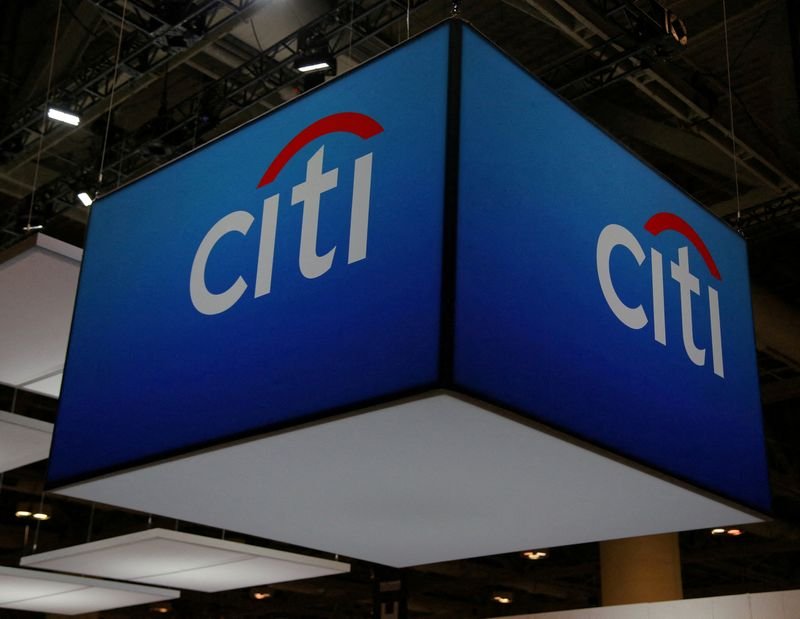Tatiana Bautzer and Manya Saini
(Reuters) – Citigroup Inc on Friday reported second-quarter profit that beat Wall Street expectations, helped by higher revenue from its investment banking, markets and services divisions, but its shares fell 2 percent on investor concerns about expenses, dividends and market share.
The third-largest U.S. bank reported profit of $1.52 per share for the three months ended June 30, beating analysts’ expectations of $1.39, according to LSEG data.
Warren Cornfeld, senior vice president of financial institutions at Moody’s Ratings, said Citi’s second-quarter shareholder return of 7.2 percent was well short of its target of 11 percent to 12 percent.
“The results again reflect the strength of the services business. However, Citi faces challenges in gaining market share and reducing costs in other segments.”
The strong results came two days after U.S. regulators fined Citi $136 million for “inadequate” efforts to resolve data management issues identified in 2020. Regulators also demanded that Citi show it was dedicating sufficient resources to those efforts.
On a conference call with analysts, Citigroup Chief Executive Officer Jane Fraser and Chief Financial Officer Mark Mason answered a wide range of questions about the bank’s share-buyback and dividend plans in the context of regulatory issues. The bank has said it could buy up to $1 billion worth of stock in the next quarter, and Fraser said regulators have not capped dividend payouts to shareholders.
Mason and Fraser said the bank’s plan for allocating resources to regulatory fixes has not yet been agreed with regulators. In areas where regulatory work is likely to be delayed, Citi will look at the root causes and determine whether further technology spending, additional applications or platform tweaks or additional employees are needed, Mason added.
Mason and Fraser described the bank’s data quality issues, adding that Citi has integrated many of the data collection systems for regulatory reporting, but more work is needed to ensure reports that use thousands of data points are of good quality without requiring manual checking by employees. The CFO also said the bank is prioritizing regulatory reporting that is more important to U.S. regulators.
As part of Jane Fraser’s sweeping overhaul aimed at improving the bank’s performance, cutting costs and simplifying much of the business, Citi aims to cut 20,000 jobs over the next two years.
Second-quarter revenue was $20.1 billion, up 4% from the same period a year ago, helped by a $400 million gain on the conversion and partial sale of Visa shares in May.
Citi now breaks down revenue separately for five businesses that were previously housed under broader divisions: Services, Markets, Banking, U.S. Consumer Banking and Wealth.
Investment banking fees rose 60% in the second quarter to $853 million. The surge came as a long period of sluggish deal activity across the industry finally showed signs of a real recovery. The increase helped drive a 38% increase in banking revenue, which included corporate lending, to $1.6 billion.
“We continue to see strong debt issuance this quarter, strong M&A, the IPO market is showing signs of recovery and the pipeline is pretty strong,” Mason said on the conference call. “M&A could play a bigger role in the second half of the year.”
Earlier this year, Citi hired JPMorgan Chase veteran Viswas Raghavan as head of banking in an effort to revitalize its multinational corporate division.
Revenue from services rose 3 percent to $4.7 billion. The division, which is centered around Citi’s treasury and trade solutions business and which the bank sees as its crown jewel. Mr. Fraser and other executives touted the services strategy in an investor presentation last month.
Markets revenue increased 6% to $5.1 billion behind a 37% increase in equity trading revenue.
Guidance plus costs
The bank cut costs through restructuring, and quarterly operating expenses fell 2 percent to $13.4 billion. Excluding fines the bank received from regulators this year, Mason said Citi expects full-year expenses to be at the high end of its previously expected range of $53.5 billion to $53.8 billion.
Rival JPMorgan Chase & Co. reported an increase in second-quarter profit on Friday, while Wells Fargo’s net income fell and interest income fell short of expectations.
Citi’s asset management division, a key part of Fraser’s growth strategy, has yet to see significant growth, with revenue rising 2 percent to $1.8 billion in the quarter.
The bank’s U.S. consumer banking revenue rose 6% to $4.9 billion, mainly due to growth in branded cards.
Analysts say 2024 will be a year of transition for City as Fraser’s restructuring slims down the club.
Investors have welcomed the initiative, sending Fraser Bank shares up 28% this year, far outperforming its closest rivals JPMorgan and Bank of America and the overall stock market.
(Reporting by Tatjana Bautzer in New York and Manya Saini in Bengaluru; Editing by Ranan Nguyen, Shaunak Dasgupta and Nick Zieminski)

